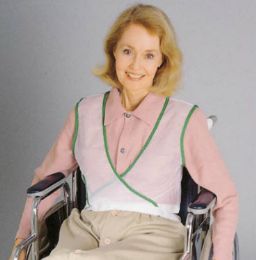
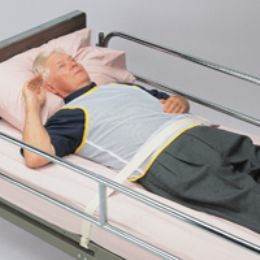
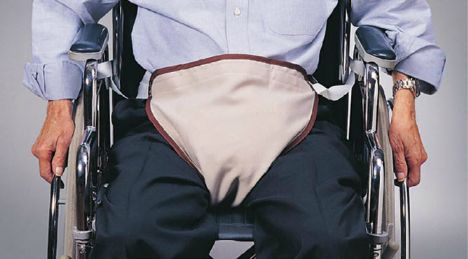

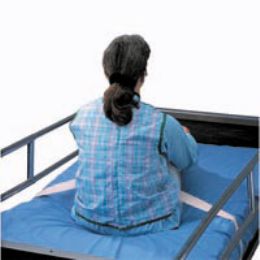
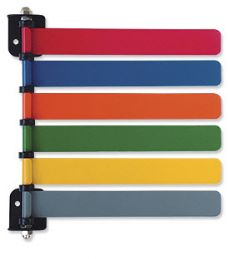
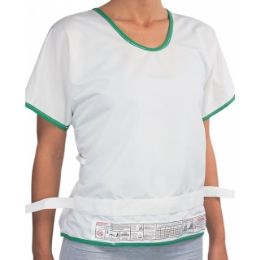
Who Needs Physical Restraints?
Hospitals, medical facilities, psychiatric hospitals and long-term care institutions all employ the use of physical restraints to keep patients and staff safe and secure. Some patients might be prone to falling out of bed, or falling once they are on their feet, so there are many devices like bed rails to keep at-risk patients in bed, or commode alarms that alert the medical staff that a patient has gotten off the commode. Specially designed vests and belts help to keep patients securely in their chair or wheelchair, while padded materials can be wrapped around wheelchair footrests and bed support bars to help protect against bruising and skin tears.
Patients who are prone to violent behaviors against themselves or others because of severe mental or physical illness are often gently and comfortably restrained with four-point restraint devices, fabric body holders and other kinds of restraint devices to keep them from injuring themselves, the attendant staff and anyone else. Straitjackets and these types of restraint devices are typically only required for temporary use during a psychiatric emergency.
What are the Different Types of Physical Restraints?
From sheepskin padded bed rails to four-point restraints, there is a restraint solution for every possible patient scenario. Here are some of the most commonly used patient safety restraints and some more information about them:
Mittens
Patient safety mittens like the Quick Check Mitts, or Infant and Child Hand Control Mittens help to prevent newborns from scratching themselves, while they are also utilized for adult patients who tend to use their hands to undo limb restraints.
Bed Safety
Having all four bed rails up on a patient's bed is a simple form of physical restraint, and helps to keep the at-risk individual safe in bed. Belts with extra-long straps like the Skil-Care Roll Belt facilitate rolling from side to side in bed, but fasten under the bed out of reach so that the patient cannot fall out of bed. Special padding and fabrics, such as the Skil-Care Thin-Line Bed Rail Pads are created specifically to provide tighter, padded spaces between the mattress and bed rail for gap protection and to help prevent bruising and skin tears.
Safety Vests and Jackets
Worn like any other typical vest or jacket, these specially made patient safety restraint vests and jackets typically feature a long strap at each end that can be tied behind a chair, out of the patient's reach, to prevent an at-risk patient from getting out of the chair. For example, the Posey Criss-Cross Vest is commonly used for elderly and other patients who are in a high risk category for serious injury from falling.
Limb Restraints
Wrapped around ankles or wrists, limb restraints, like the Deluxe Single Strap Limb Holders and Leather Limb Holders, aid in the prevention of unwanted limb activity. They help stop patients from potentially hurting themselves or others by having their arms and/or legs secured to the side of the bed.
Soft Splints
Typically recommended for patients who require an external limb splint, soft splint restraints like the Posey Soft Splints are helpful in the prevention of tube pulling, and are especially indicated for patients with IV hookups of any kind.
Lap and Wheelchair Belts
Specially designed wheelchair belts that fasten behind the wheelchair greatly assist in keeping patients safely in their seats. Perfect for patients with neurological disorders, belts like the DeRoyal Pelvic Holder-Extra Security, Posey Waist and Chest Vest and the DeRoyal Foam Wheelchair Belt comfortably restrain patients from sliding or slipping out of their wheelchairs.
Other Patient Safety Devices
Aside from specific physical restraint devices, there are a multitude of other products and equipment that can help keep patients safe. Specially designed floor mats, like the Skil-Care Soft Fall Bedside Mat, can help cushion impact and provide some protection from falls next to a bed, or beside a chair. Safety Transfer Discs enable patients who cannot turn on their own to do so, facilitating safer and easier transfers, while the Stick-to-Stand System allows the patient's caregivers to match furniture heights that are needed to safely transfer the patient. Chairs and toilets with built-in alarms help to alert caregivers when their patient has risen from the chair or commode so that they can help prevent the patient from slipping or falling.
Rehabmart offers a wide variety of professional, medical physical restraint and patient safety devices from respected manufacturers which include Posey, Skil-Care, McKesson Medical Surgical, DeRoyal and Sammons Preston.
Hulet Smith, OT
Rehabmart Co-Founder & CEO
ck